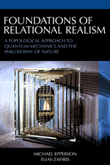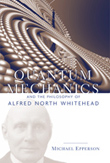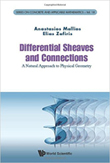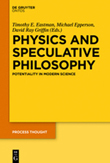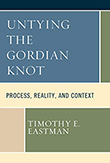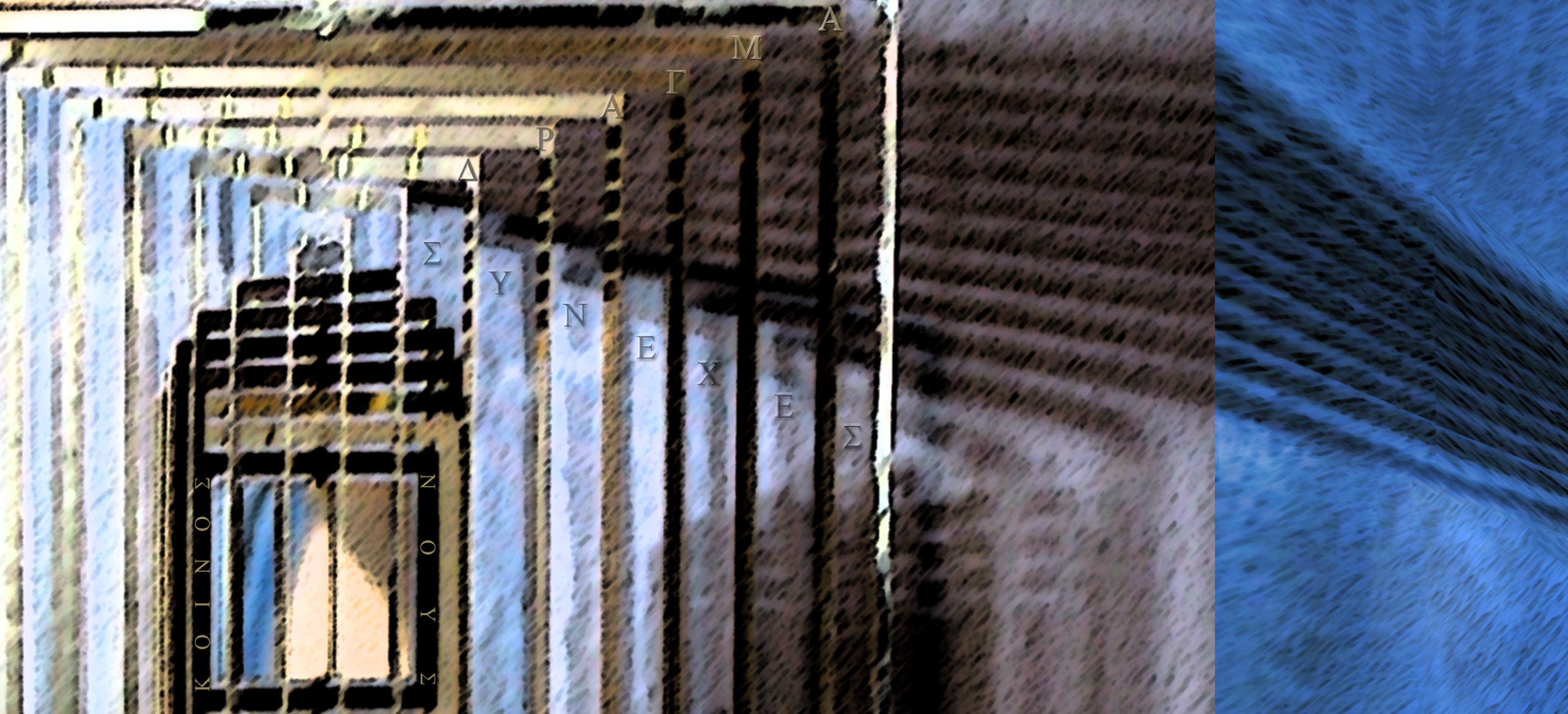project applications

Principal Investigators: Michael Epperson, CPNS-CSUS & Elias Zafiris, Senior Research Fellow in Theoretical and Mathematical Physics, University of Athens. Supported by a grant from the Fetzer-Franklin Fund (Grant D21C62)
A Sheaf-Theoretic Mereotopological Model of Quantum Spacetime
The mathematical rigidity of the Hilbert space (as a topological vector space) does not allow a relativization analogous with the one of classical relativity theory on smooth manifolds. By contrast, the mereotopological/category-theoretic reformulation of quantum logic in terms of Boolean localization systems presented in our project capstone volume Foundations of Relational Realism achieves precisely this objective by generalizing the smooth manifold construction in generic algebraic/categorical terms.
This makes it possible to formulate a framework of local/global or part/whole relations without the intervention of a spacetime classically conceived. On the contrary, the usual spacetime manifold and its metrical relations (imposing extra conditions like the light-cone causality relations) appear as emergent at a higher level than the more fundamental level of logical and algebraic part-whole relations. Epperson’s distinction between a) mereological/topological/logical relations, and b) physical/metrical/causal relations, is reflected precisely in Zafiris’ distinction between these two different levels--the algebraic part-whole relations and the metrical spacetime relations, respectively--where the latter can be seen as an emergent/metrical specialization of the former. The key issue we explore is the problem of localization and the problem of passing from the local to the global in an extensive continuum.
In Whitehead's language this is reflected in the distinction between genetic division (presupposing a generic/algebraic type of localization) and coordinate division (like the one of the classical spacetime manifold endowed with a semi-Riemannian metric and dictating the light-cone causality relations). Since now we can prove that the latter is an emergent form of the more fundamental former division, there is no tension between the fundamental mereological order of the extensive continuum (formalized sheaf theoretically in Foundations of Relational Realism) and the more special spatio-temporal causal extensive order pertinent to a point-wise localized and metricized continuum. This has fundamental consequences for the interpretation of the mechanism of differential extensive analysis, which is crucial for physics since it captures the dynamical relations in an extensive continuum of events.
Proof of Concept: The Homological Kahler-De Rahm Differential Mechanism
As an implementation of the sheaf theoretic framework formalized in Foundations of Relational Realism, these two project papers by Co-I Elias Zafiris demonstrate that the dynamical mechanism of physical fields can be formulated by purely algebraic means, in terms of the homological Kähler-De Rham differential schema, constructed by connection inducing functors and their associated curvatures, independently of any background substratum. In this context, the authors show explicitly that the application of this mechanism in General Relativity, instantiating the case of gravitational dynamics, is related with the absolute representability of the theory in the field of real numbers, a byproduct of which is the fixed background manifold construct of this theory. Furthermore, the background independence of the homological differential mechanism is of particular importance for the formulation of dynamics in quantum theory, where the adherence to a fixed manifold substratum is problematic due to singularities or other topological defects.
A Topological, Sheaf-Theoretic Explication of Quantum Geometric Phases by Analysis of Experimental Data on the Aharonov-Bohm Effect, the Pancharatnam Phase, and the Quantum Hall Effect, Toward a Unified Interpretation
Our second focus is the application of our sheaf theoretic, relational quantum formalism to the task of explicating the well-known but poorly understood problem of quantum geometric phases. We will do so by analysis of experimental data on the Aharonov-Bohm Effect, the Pancharatnam Phase, and the Quantum Hall Effect, toward a unified interpretation of all three.
"Knowledge of the classical electromagnetic field acting locally on a particle is not sufficient to predict its quantum-mechanical behavior... For a long time it was believed that A [the vector potential] was not a ‘real’ field... There are phenomena involving quantum mechanics which show that in fact A is a ‘real’ field in the sense that we have defined it... E and B [electromagnetic fields] are slowly disappearing from the modern expression of physical laws; they are being replaced by A [the vector potential] and \varphi [the scalar potential].” ~Richard Feynman
"We believe that the concept of a geometric phase, repeating the history of the group concept, will eventually find so may realizations and applications in physics that it will repay study for its own sake, and become part of the lingua franca." ~A. Shapere and F. Wilczek
In a groundbreaking paper published in the mid-1980’s, Sir M. Berry discovered that a quantum system undergoing a slowly evolving (adiabatic) cyclic evolution retains a “memory” of its motion after coming back to its original physical state. This “memory” is expressed by means of a complex phase factor in the wave-function of the system, called Berry’s phase or the geometric phase. The main idea is that a quantum system in a slowly changing environment displays a history dependent geometric effect: When the environment returns to its original state, the system also does, but for an additional phase.
The Berry phase is a complex number of modulus one and is experimentally observable. The two most important properties of the geometric phase are [1] that it is a statistical object, and [2] it can be measured only relatively. Thus it becomes observable by comparing the evolution of two distinct statistical ensembles of systems through their interference pattern. The Berry phase is called ‘geometric’ because it depends solely on the topology of the pathway along which the system evolves and neither on the temporal metric duration of the evolution nor on the dynamics that is applied to the system.
After Berry’s initial experimental discovery of the geometric phase, it has been demonstrated that it also exists for non-adiabatic evolutions and even for sequences of measurements. All these experimental observations of the geometric phase phenomenon, including the Aharonov-Bohm, Pancharatnam, and Quantum Hall effects—as well as features of molecular and nuclear spectra, vortices occurring in superfluid helium, and even chemical reactions—help to emphasize its purely topological nature. In this way, the geometric phase observable initiated a tremendous surge of experimental research across a diverse range of physics disciplines establishing surprising connections among a number of apparently disparate phenomena—again, viz. the Aharonov-Bohm effect, its molecular physics analogue by Mead and Truhlar, polarization optics effects, and the Quantum Hall effect. Thus, we expect that a unified topological approach to the study, description and interpretation of all these experimentally well-established geometric phase phenomena will shed light on their nature, lead to predictions of new effects of a similar type, and even provide a paradigm for applications in areas beyond the strict domain of natural sciences.
The novel topological approach to quantum mechanics we present in Foundations of Relational Realism and our related papers provides a promising candidate for evaluating consistently the experimental data of geometric phases observed in all the above experiments. Such an evaluation would demonstrate our work’s applicability to diverse quantum phenomena, explicated via the lens of a unifying topological theoretical framework, which is based on the powerful modern mathematical methods of category theory and sheaf theory.
The application of our topological formalism to the analysis of experimental data, carrying with it an associated unifying realistic interpretation of geometric phase phenomena, thus constitutes a natural continuation and experimental substantiation of our previous research program. The basic principle underlying the crucial explanatory role of this approach in relation to geometric phases is the following: Whenever a global physical system is partitioned into local parts and one attempts to describe a subsystem in isolation, the influence and connectivity of the others is manifested through geometric phase effects of a pure topological origin.
The pervasiveness throughout the natural sciences of this part-whole methodology accounts for the ubiquity of the geometric phase effect, but not its explanation. We propose to solve this problem via our realistic mereotopological formalism and conceptual framework. To that end, the precise mathematical notion which captures the topological origin of geometric phases is the anholonomy of a connection on a sheaf modeling the structure of events. The notion of a sheaf connection provides the technical means for describing the process of parallel transport of the state vector of a system along a curve on the space of the control variables. The particular transformation undergone by the state vector when it is parallel-transported along a closed curve is called the anholonomy of the sheaf connection. Thus, the anholonomy describes the state vector transformation induced by cyclic changes (loops) in the controlling variables. A simple intuitive example from macroscopic geometry is provided by the rotation of a vector when parallel-transported along a closed path on a curved surface. The topological nature of the effect is realized by the fact that if the parallel transport of a vector takes place along a closed path on a plane, the vector comes back unchanged; whereas if it takes place along a closed path on a sphere it gets rotated by an angle, which is measured precisely by the anholonomy of the connection.
For more information, see the following:
CPNS White Paper on our Sheaf Theoretic Approach to Quantum Geometric Phases
